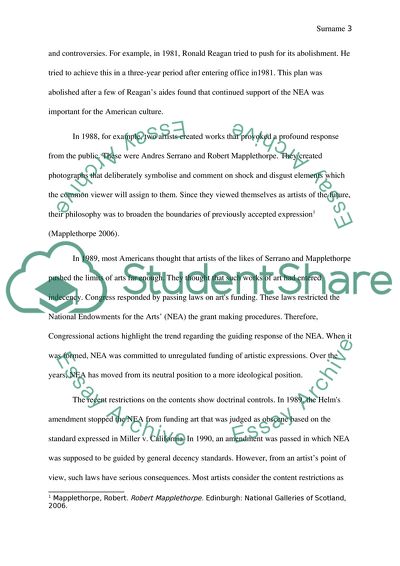Cite this document
(The National Endowment for the Arts Assignment Example | Topics and Well Written Essays - 3750 words, n.d.)
The National Endowment for the Arts Assignment Example | Topics and Well Written Essays - 3750 words. https://studentshare.org/visual-arts-film-studies/1819575-the-national-endowment-for-the-arts
The National Endowment for the Arts Assignment Example | Topics and Well Written Essays - 3750 words. https://studentshare.org/visual-arts-film-studies/1819575-the-national-endowment-for-the-arts
(The National Endowment for the Arts Assignment Example | Topics and Well Written Essays - 3750 Words)
The National Endowment for the Arts Assignment Example | Topics and Well Written Essays - 3750 Words. https://studentshare.org/visual-arts-film-studies/1819575-the-national-endowment-for-the-arts.
The National Endowment for the Arts Assignment Example | Topics and Well Written Essays - 3750 Words. https://studentshare.org/visual-arts-film-studies/1819575-the-national-endowment-for-the-arts.
“The National Endowment for the Arts Assignment Example | Topics and Well Written Essays - 3750 Words”. https://studentshare.org/visual-arts-film-studies/1819575-the-national-endowment-for-the-arts.


